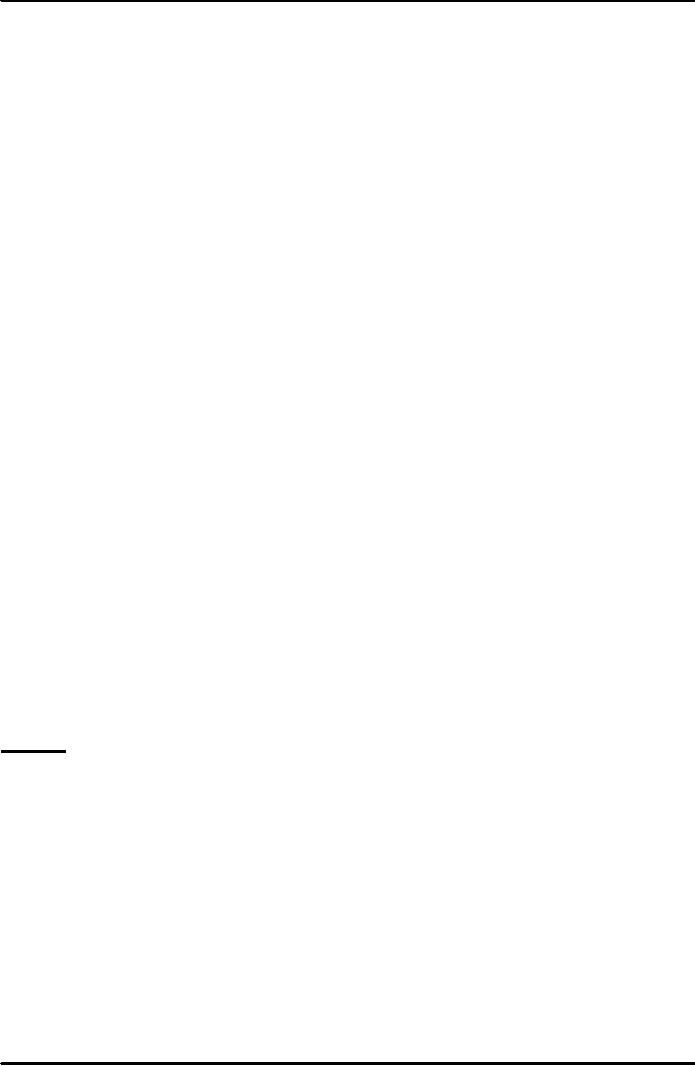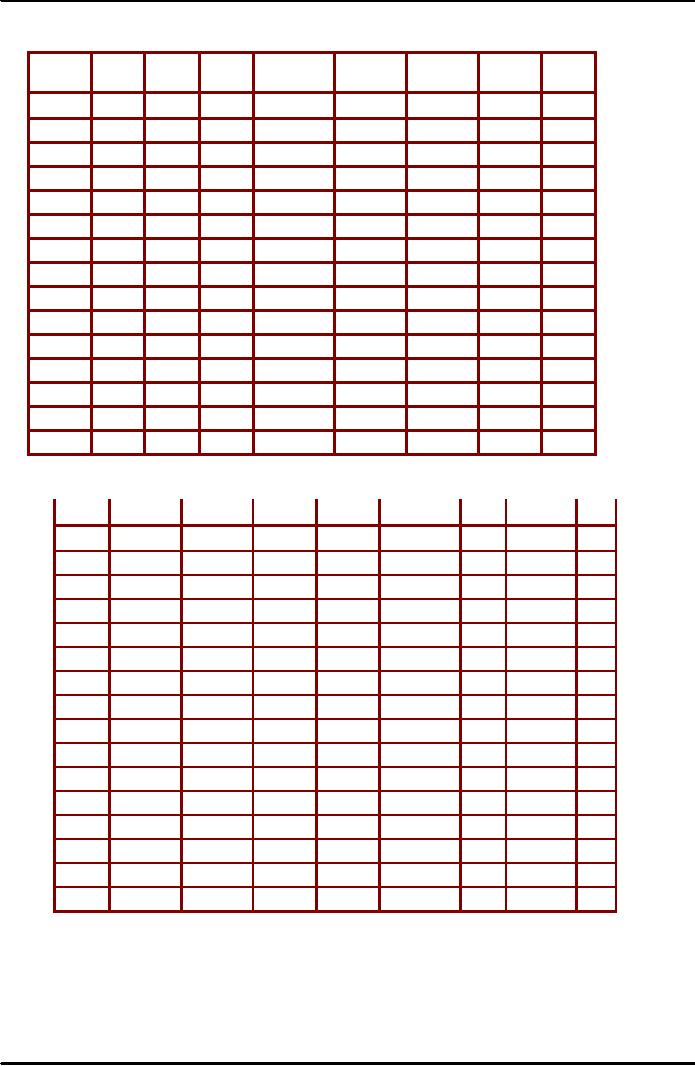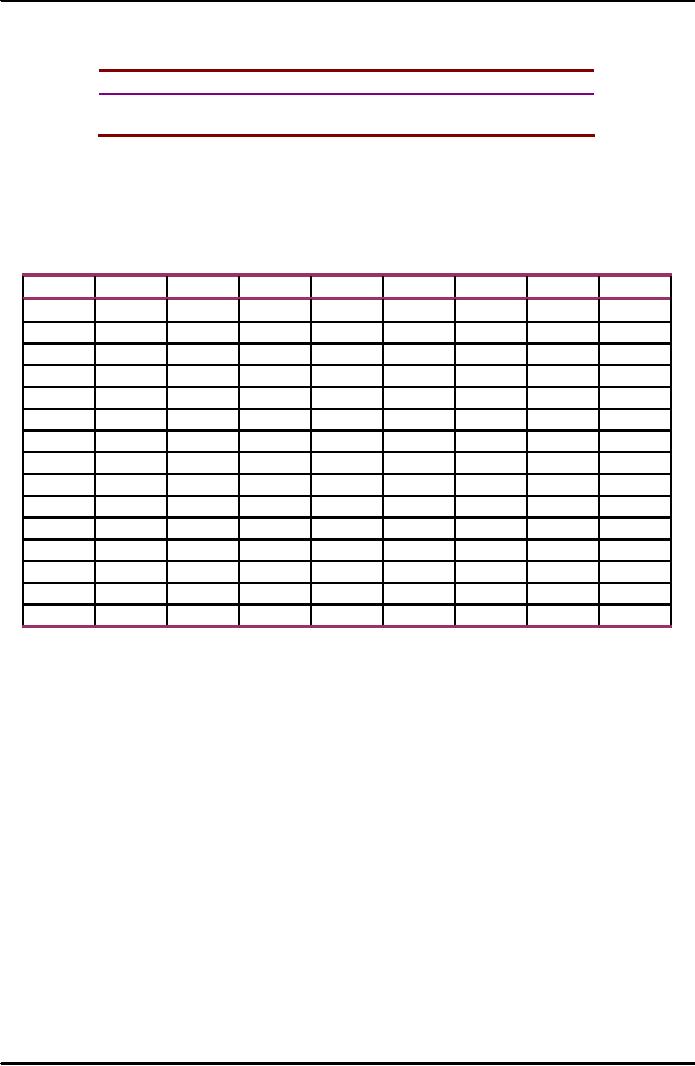 |
BACKGROUND TO SUPPLY/COSTS (CONTINUED…………..):PROFIT MAXIMISATION |
| << BACKGROUND TO SUPPLY/COSTS (CONTINUED…………..):REVENUES |
| MARKET STRUCTURES:PERFECT COMPETITION, Allocative efficiency >> |

Introduction
to Economics ECO401
VU
Lesson
5.6
BACKGROUND
TO SUPPLY/COSTS
(CONTINUED..............)
PROFIT
MAXIMISATION
Economists
say that when firms
earn zero accounting
profits, they actually earn
normal
economic
profits because TC already
includes the normal profits
that owners of the firms
need
for
themselves to stay in the
business. Positive profits
are, for this reason,
called supernormal
profits
as they are over and
above what the owners
normally require as a return
for their
entrepreneurship.
Approaches
of Profit Maximization:
Profit
maximization can be studied
using the TR-TC approach
and the MR-MC
approach.
i.
In the TR-TC approach it is
assumed that firm is price
maker and firm is
operating
in
short run. Total profit is
the vertical distance
between TR and TC.
ii.
In the MR-MC approach, two
steps are followed to
identify maximum profit.
First:
the
profit-maximizing output is identified
this is the point
where MR cuts MC.
Second:
the size of maximum profit
is calculated using AC and AR
curves.
If
MR & AR remain same over
the long run, then
the profit maximizing output
will be obtained
where
MR intersects LRMC.
If
AC is always above AR, then
firms will never be able to
make a profit. In this case,
the point
where
MR=MC, represents the
loss-minimizing point.
When
MC and MR intersect at two
points, not one, then
Firms should produce at that
point of
intersection
of MR and MC beyond which, MC
exceeds MR.
If
a firm's AR is below its AVC, it
will shut down since it is
not covering any part of
its fixed
costs.
Profit
maximization using
calculus:
If
total revenue (TR) and
total cost equation are
given as follows:
TR
= 48q q2
TC
= 12 + 16q + 3Q2
Then
we can find out the
value of output at which
profit is maximized as
under:
Solution:
Profit
is maximized at the point
where
MC
= MR
MC
function can be found by
taking derivative of total
cost function. i.e.:
MC
= d TC / dQ
MC
= 16 + 6Q
MR
function can be found by
taking derivative of total
revenue (TR) function
i.e.:
MR
= d TR / dQ
=
48 2Q
As
profit is maximized at the
point where MR = MC, so by equating
values of MC and MR
function,
we get,
46

Introduction
to Economics ECO401
VU
MR
=MC
16
+ 6Q = 48 2Q
6Q
+ 2Q = 48 16
8Q
= 32
Q=4
The
equation for total profit
is,
Tń
= TR TC
=
48Q Q2 -
(12 + 16Q + 3Q2)
=
48Q Q2
12 16Q 3Q2
=
-4Q2 +
32Q 12
Putting
Q = 4, we get,
Tń
= - 4(4)2 +
32 (4) 12
=
-64 + 128 - 12
Tń
= 52
So
profit is maximized where
output is 4 and the maximum
profit is 52.
47

Introduction
to Economics ECO401
VU
END
OF UNIT 5 - EXERCISES
How
will the length of the
short run for a shipping
company depend on the state
of the
shipbuilding
industry?
If
the shipbuilding industry is in
recession, the short run
(and the long run)
may be shorter. It
will
take less time to acquire a
new ship if there is no
waiting list, or if there
are already ships
available
to purchase (with perhaps
only minimal modifications
necessary).
Up
to roughly how long is the
short run in the following
cases?
(a)
A mobile ice-cream firm. (b)
A small grocery. (c)
Electricity power
generation.
a)
2-3 days: the time
necessary to acquire new
bicycles, equipment and
workers.
b)
Several weeks: the time
taken to acquire additional
premises.
c)
3-5 years: the time
taken to plan and build a
new power station.
How
would you advise the
naanwaala (bread-maker) next
door as to whether he
should
(a)
employ an extra assistant on a
Sunday (which is a high
demand day); (b) extend
his
shop,
thereby allowing more
customers to be served on a
Sunday?
a)
If maximizing profit is the
sole aim, then he should
employ an additional assistant if
the
extra
revenue from the extra
customers that the assistant
can serve is greater than
the
costs
of employing the
assistant.
b)
Only if the extra revenue
from the extra customers
will more than cover
the costs of the
extension
plus the extra
staffing.
Given
that there is a fixed supply
of land in the world, what
implications can you
draw
from
about the effects of an
increase in world population
for food output per
head?
Other
things being equal,
diminishing returns would
cause food output per
head to decline (a
declining
MPP and APP of labour).
This, however, would be
offset (partly, completely or
more
than
completely) by improvements in
agricultural technology and by
increased amounts of
capital
devoted to agriculture: this
would have the effect of
shifting the APP curve
upwards.
The
following are some costs
incurred by a shoe manufacturer.
Decide whether
each
one
is a fixed cost or a variable
cost or has some element of
both.
(a)
The cost of leather. (b)
The fee paid to an
advertising agency. (c) Wear
and tear on
machinery.
(d) Business rates on the
factory. (e) Electricity for
heating and lighting.
(f)
Electricity
for running the machines.
(g) Basic minimum wages
agreed with the
union.
(h)
Overtime pay. (i)
Depreciation of machines as a result
purely of their
age
(irrespective
of their condition).
(a)
Variable. (b) Fixed (unless
the fee negotiated depends
on the success of the
campaign).
(c)
Variable (the more that is
produced, the more the
wear and tear). (d)
Fixed. (e) Fixed if
the
factory will be heated and
lit to the same extent
irrespective of output, but
variable if the
amount
of heating and lighting
depends on the amount of the
factory in operation, which
in
turn
depends on output. (f)
Variable. (g) Variable
(although the basic wage is
fixed per
worker,
the cost will still be
variable because the total
cost will increase with
output if the
number
of workers is increased). (h)
Variable. (i) Fixed (because
it does not depend on
output).
Assume
that a firm has 5 identical
machines, each operating
independently. Assume
that
with all 5 machines
operating normally, 100
units of output are produced
each day.
Below
what level of output will
AVC and MC rise?
20
units. Below this level,
the one remaining machine
left in operation will begin
to operate at a
level
below its optimum. (Note
that with 5 machines
producing 100 units of
output, minimum
AVC
could be achieved at 100,
80, 60, 40 and 20 units of
output, but between these
levels
some
machines may be working at
less than their optimum
and some at more than
their
48

Introduction
to Economics ECO401
VU
optimum.
Thus if the optimum level
for a machine is critical,
then the AVC curve may
look
`wavy'
rather than a smooth
line.
Why
is the minimum point of the
AVC curve (y) at a lower
level of output than
the
minimum
point of the AC curve
(z)?
Because
between points y and z
marginal cost is above AVC
(and thus AVC must be past
the
minimum
point) but below AC (and
thus AC cannot yet have
reached the minimum
point).
Even
though AVC is rising beyond
point y, the fall in AFC
initially more than offsets
the rise in
AVC
and thus AC still
falls.
What
economies of scale is a large
department store likely to
experience?
Specialized
staff for each department
(saving on training costs
and providing a more
efficient
service
for customers); being able
to reallocate space as demand
shifts from one product
to
another
and thereby reducing the
overall amount of space
required; full use of large
delivery
lorries
which would be able to carry
a range of different products;
bulk purchasing
discounts;
reduced
administrative overheads as a proportion
of total costs.
Why
are firms likely to
experience economies of scale up to a
certain size and
then
diseconomies
of scale after some point
beyond that?
Because
economies of scale, given
that most arise from
increasing returns to scale,
will be
fully
realized after a certain
level of output, whereas
diseconomies of scale, given
that they
largely
arise from the managerial
problems of running large
organizations, are only
likely to set
in
beyond a certain level of
output.
How
is the opening up of trade
and investment between, say
eastern and
western
Europe,
likely to affect the
location of industries within
Europe that have (a)
substantial
economies
of scale; (b) little or no
economies of scale?
a)
Given that production will
take place in only one or
two plants, new plants
will tend to
be
located near to the centre
of the new enlarged European
market.
b)
Plants will still tend to be
scattered round Europe,
given that the customers
are
scattered.
These
effects will be the result
of attempts to minimize transport
costs and thus will be
more
significant
the higher are transport
costs per kilometer.
Name
some industries where
external economies of scale
are gained. What are
the
specific
external economies in each
case?
Two
examples are:
·
Financial
services: pool of qualified
and experienced labour,
access to specialist
software,
one firm providing
specialist services to
another.
·
Various
parts of the engineering
industry: pool of qualified
and experienced
labour,
access
to specialist suppliers, possible
joint research, specialized
banking services.
Would
you expect external
economies to be associated with
the concentration of an
industry
in a particular region?
Yes.
There may be a common
transport and communications
infrastructure that can be
used;
there
is likely to be a pool of trained
and experienced labour in
the area; joint demand
may be
high
enough to allow economies of
scale to be experienced in the
supply of some
locally
extracted
raw material.
If
factor X costs twice as much
as factor Y (Px/Py = 2),
what can be said about
the
relationship
between the MPPs of the
two factors if the optimum
combination of factors
is
used?
MPPx/MPPy
= 2. The reason is that if
MPPx/Px = MPPy/Py, then, by
rearranging the terms
of
the
equation, MPPx/MPPy must
equal Px/Py (= 2).
49

Introduction
to Economics ECO401
VU
Could
isoquants ever
cross?
Not
for a given state of
technology, otherwise it would
mean that at one side of
the intersection
the
higher output isoquant would
be `south-west' of the lower
output isoquant. This
would
mean
that a higher output could
be achieved by using less of
both factors of
production!
Could
they ever slope upward to
the right?
Yes.
It would mean that one of
the two factors had a
negative marginal productivity
that was
greater
than the positive marginal
productivity of the other:
i.e. that MPPa/MPPb
(or
MPPb/MPPa)
was negative (a negative
marginal rate of factor
substitution).
This
situation will occur when so
much is used of one factor
that diminishing returns
have
become
so great as to produce substantial
negative marginal productivity:
isoquants will bend
back
on themselves beyond the
points where they become
vertical or horizontal. The
firm,
however,
will not produce along
this portion of an isoquant,
because the price ratio
(Pa/Pb) will
(virtually)
never be negative.
What
will happen to an isocost if
the prices of both factors
rise by the same
percentage?
It
will shift inwards parallel
to the old isocost.
Why
do the prices of cattle and
sheep prices fall so
drastically "on", or just
"after" the
first
day of Eid-ul-Azha?
The
supply curve for cattle
and sheep is fixed in the
short-run, i.e. a vertical
supply curve,
therefore
price will be determined by
demand. Since demand for
"cattle for sacrifice"
falls
drastically
after or on the first day of
Eid-ul-Azha, the price has
to come down drastically
as
well
for the market to
clear.
Explain
the shape of the LRMC
curve for a firm with a
typical U-shaped LRAC
curve.
At
first economies of scale
cause the LRMC to fall.
Then because of (marginal)
diseconomies
of
scale, additional units of
production begin to cost
more to produce than
previous units: the
LRMC
begins to slope upwards. But
the LRAC is still falling
because the LRMC is below
it
pulling
it down. It is not until the
LRMC crosses the LRAC
that the firm will
experience a rising
LRAC
and hence average
diseconomies of scale.
Will
the "envelope curve" be
tangential to the bottom of
each of the short-run
average
cost
curves? Explain why it should or
should not be.
No.
At the tangency points the
two curves must have
the same slope. Thus
the slope at the
tangency
point is not zero (the
slope at the turning point
or minima of the SRAC
curves).
What
would the isoquant map look
like if there were (a)
continuously increasing
returns
to
scale; (b) continuously
decreasing returns to
scale?
a)
The isoquants would get
progressively closer and
closer together.
b)
The isoquants would get
progressively further and
further apart.
What
can we say about the slope
of the TR and TC curves at
the maximum profit
point?
What
does this tell us about
marginal revenue and
marginal cost?
The
slopes are the same.
But given that the
slope of the total curve
gives the respective
marginal,
this means that marginal
revenue will be equal to
marginal cost.
50

Introduction
to Economics ECO401
VU
Fill
in the missing figures in
the table below.
TΠ
AΠ
Q
P=
TR
MR
TC
AC
MC
AR
0
9
6
1
8
10
2
7
12
3
6
14
4
5
18
5
4
25
6
3
36
7
2
56
TΠ
AΠ
Q
P
= AR
TR
MR
TC
AC
MC
0
9
0
6
6
8
4
1
8
8
10
10
2
2
6
2
2
7
14
12
6
2
1
4
2
3
6
18
14
4.3
4
1.3
2
4
4
5
20
18
4.5
2
0.5
0
6
5
4
20
25
5
5
1
2
9
6
3
18
36
6
18
3
4
16
7
2
14
56
8
42
6
Why
should the figures for MR
and MC be entered in the
spaces between the
lines?
Because
marginal revenue (or cost)
is the extra revenue (or
cost) from moving from
one quantity
to
another.
51

Introduction
to Economics ECO401
VU
You
are given the following
information for a
firm.
Q
0
1
2
3
4
5
6
7
P
12
11
10
9
8
7
6
5
TC
2
6
9
12
16
21
28
38
Construct
a detailed table like the
one you constructed in the
earlier question with TR,
AC,
MR,
TC, AC, MC, TΠ
and
AΠ.
Use your table to draw
"two" diagrams (one with
the marginal
revenue
and cost curves, and
one with the total
(or average) revenue and
cost curves) and
use
them to show the
"profit-maximising output" and
the "level of maximum
profit",
respectively.
Confirm your findings by
reference to the table you
construct.
TΠ
AΠ
Q
P
= AR
TR
MR
TC
AC
MC
0
12
0
2
2
11
4
1
11
11
6
6
5
5
9
3
2
10
20
9
4.5
11
5.5
7
3
3
9
27
12
4
15
5
5
4
4
8
32
16
4
16
4
3
5
5
7
35
21
4.2
14
2.8
1
7
6
6
36
28
4.7
8
1.3
1
10
7
5
35
38
5.4
3
0.4
The
curves will be a similar
shape to those discussed in
the lecture, and included in
the slides
handout.
The peak of the TΠ
curve
will be at Q = 4. This will be
the output where MR and
MC
intersect.
Will
the size of normal `profit'
vary with the general
state of the
economy?
Yes.
Normal
profit is the rate of profit
that can be earned elsewhere
(in industries
involving
similar
level of risk). When the
economy is booming, profits
will normally be higher than
when
the
economy is in recession. Thus
the `normal' profit that
must be earned in any one
industry
must
be higher to prevent capital
being attracted to other
industries.
Given
the following
equations:
TR
= 72Q 2Q˛; TC = 10 + 12Q +
4Q˛
Calculate
the maximum profit output
and the amount of profit at
that output using
both
methods.
(a)
TΠ
=
72Q 2Q˛ 10 12Q
4Q
=
10 + 60Q 6Q˛
(1)
∴
dTΠ /dQ = 60
12Q
Setting
this equal to zero
gives:
52

Introduction
to Economics ECO401
VU
60
12Q = 0
∴
12Q
= 60
∴
Q=5
(b)
MR = dTR/dQ = 72 4Q
MC
= dTC/dQ = 12 + 8Q
Setting
MR equal to MC gives:
72
4Q = 12 + 8Q
∴
12Q
= 60
∴
Q=5
To
find the level of maximum
profit, we must substitute Q = 5
into equation (1). This
gives:
TΠ = 10 + (60
×
5) (6
×
5˛)
=
10 + 300 150
=
Rs. 140
53
Table of Contents:
- INTRODUCTION TO ECONOMICS:Economic Systems
- INTRODUCTION TO ECONOMICS (CONTINUED………):Opportunity Cost
- DEMAND, SUPPLY AND EQUILIBRIUM:Goods Market and Factors Market
- DEMAND, SUPPLY AND EQUILIBRIUM (CONTINUED……..)
- DEMAND, SUPPLY AND EQUILIBRIUM (CONTINUED……..):Equilibrium
- ELASTICITIES:Price Elasticity of Demand, Point Elasticity, Arc Elasticity
- ELASTICITIES (CONTINUED………….):Total revenue and Elasticity
- ELASTICITIES (CONTINUED………….):Short Run and Long Run, Incidence of Taxation
- BACKGROUND TO DEMAND/CONSUMPTION:CONSUMER BEHAVIOR
- BACKGROUND TO DEMAND/CONSUMPTION (CONTINUED…………….)
- BACKGROUND TO DEMAND/CONSUMPTION (CONTINUED…………….)The Indifference Curve Approach
- BACKGROUND TO DEMAND/CONSUMPTION (CONTINUED…………….):Normal Goods and Giffen Good
- BACKGROUND TO SUPPLY/COSTS:PRODUCTIVE THEORY
- BACKGROUND TO SUPPLY/COSTS (CONTINUED…………..):The Scale of Production
- BACKGROUND TO SUPPLY/COSTS (CONTINUED…………..):Isoquant
- BACKGROUND TO SUPPLY/COSTS (CONTINUED…………..):COSTS
- BACKGROUND TO SUPPLY/COSTS (CONTINUED…………..):REVENUES
- BACKGROUND TO SUPPLY/COSTS (CONTINUED…………..):PROFIT MAXIMISATION
- MARKET STRUCTURES:PERFECT COMPETITION, Allocative efficiency
- MARKET STRUCTURES (CONTINUED………..):MONOPOLY
- MARKET STRUCTURES (CONTINUED………..):PRICE DISCRIMINATION
- MARKET STRUCTURES (CONTINUED………..):OLIGOPOLY
- SELECTED ISSUES IN MICROECONOMICS:WELFARE ECONOMICS
- SELECTED ISSUES IN MICROECONOMICS (CONTINUED……………)
- INTRODUCTION TO MACROECONOMICS:Price Level and its Effects:
- INTRODUCTION TO MACROECONOMICS (CONTINUED………..)
- INTRODUCTION TO MACROECONOMICS (CONTINUED………..):The Monetarist School
- THE USE OF MACROECONOMIC DATA, AND THE DEFINITION AND ACCOUNTING OF NATIONAL INCOME
- THE USE OF MACROECONOMIC DATA, AND THE DEFINITION AND ACCOUNTING OF NATIONAL INCOME (CONTINUED……………..)
- MACROECONOMIC EQUILIBRIUM & VARIABLES; THE DETERMINATION OF EQUILIBRIUM INCOME
- MACROECONOMIC EQUILIBRIUM & VARIABLES; THE DETERMINATION OF EQUILIBRIUM INCOME (CONTINUED………..)
- MACROECONOMIC EQUILIBRIUM & VARIABLES; THE DETERMINATION OF EQUILIBRIUM INCOME (CONTINUED………..):The Accelerator
- THE FOUR BIG MACROECONOMIC ISSUES AND THEIR INTER-RELATIONSHIPS
- THE FOUR BIG MACROECONOMIC ISSUES AND THEIR INTER-RELATIONSHIPS (CONTINUED…….)
- THE FOUR BIG MACROECONOMIC ISSUES AND THEIR INTER-RELATIONSHIPS (CONTINUED…….):Causes of Inflation
- THE FOUR BIG MACROECONOMIC ISSUES AND THEIR INTER-RELATIONSHIPS (CONTINUED…….):BALANCE OF PAYMENTS
- THE FOUR BIG MACROECONOMIC ISSUES AND THEIR INTER-RELATIONSHIPS (CONTINUED…….):GROWTH
- THE FOUR BIG MACROECONOMIC ISSUES AND THEIR INTER-RELATIONSHIPS (CONTINUED…….):Land
- THE FOUR BIG MACROECONOMIC ISSUES AND THEIR INTER-RELATIONSHIPS (CONTINUED…….):Growth-inflation
- FISCAL POLICY AND TAXATION:Budget Deficit, Budget Surplus and Balanced Budget
- MONEY, CENTRAL BANKING AND MONETARY POLICY
- MONEY, CENTRAL BANKING AND MONETARY POLICY (CONTINUED…….)
- JOINT EQUILIBRIUM IN THE MONEY AND GOODS MARKETS: THE IS-LM FRAMEWORK
- AN INTRODUCTION TO INTERNATIONAL TRADE AND FINANCE
- PROBLEMS OF LOWER INCOME COUNTRIES:Poverty trap theories: